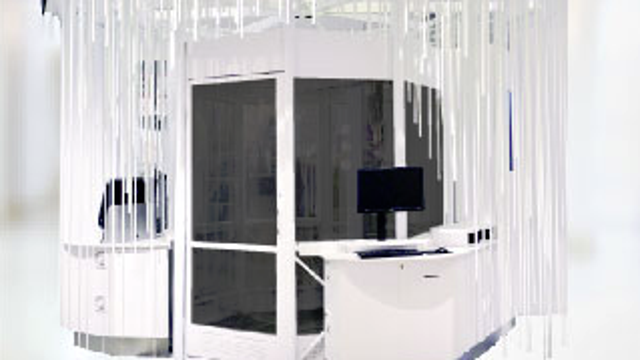High-Tech Body Scanner Brings Denim Shopping Into the Future
While the airport-security experience isn’t exactly fashion-forward, one Canadian startup is using the same technology behind TSA body scanners to bring shopping into the 21st century.
Nova Scotia-based Me-Ality has installed body scanners in five Bloomingdale’s locations across the U.S., with the purpose of helping shoppers find perfectly fitting denim. The company, which has secured 19 patents, uses low-power millimeter wave technology to see through clothing to find a shopper’s true size.
“[B]asically what it does is see through clothing and bounce off water molecules in the skin,” says CEO Tanya Shaw, who founded Me-Ality in 2002. Today, Shaw says the company is eyeing expansion beyond Bloomingdale’s to other retail partners, as well as more unconventional locations like college campuses – and even airports.
Bringing Me-Ality from Idea to Reality
After having built a career in women’s fashion design, Shaw says she was struck by the complicated issues surrounding fit. In a size-conscious society, the dressing-room experience can be fraught with emotion, and to make matters worse, sizes can range dramatically from brand to brand.
“I saw how many beautiful, successful, great women were really tying their own self-esteem into the size on the tag and [were] really frustrated by the whole shopping experience … I thought there’s got to be a way to use technology to eliminate that and not send customers on a treasure hunt through the store,” says Shaw. Plus, she had a sense that getting shoppers directly into clothing that actually fit – rather than having them try on a lot of items that missed the mark – would lead them to spend more in store.
Me-Ality’s team, which is spread between headquarters in Nova Scotia and offices in New York City and Philadelphia, was able to develop technology designed not to identify dangerous items (as in the case of TSA scanners) but instead accurately determine a person’s size – without having to remove any clothing. Once a shopper enters into the scanning station, the entire process takes about ten seconds, from start to finish. After the scanning has concluded, the shopper receives a printout of denim recommendations, in the exact style, size and brand the digital reading finds best-suited for his or her body.
While Shaw says Me-Ality will be debuting a new online platform this year, shoppers can already log on at home, and check out recommendations for other clothing items besides denim. Shaw and her team have raised more than $30 million from Canada’s Northwater Intellectual Property Fund, which invests heavily in companies with strong IP portfolios.
Getting the Bloomingdale’s Seal of Approval
Me-Ality originally debuted its scanners in 2011 in hundreds of stand-alone mall locations across the U.S.
“The mall-based program was really just to create awareness for the technology, and then we wanted to find the right retail partners that could help us roll out across the country,” says Shaw.
Shaw says the historic Bloomingdale’s was an obvious target, and after a meeting in 2012 with senior executives, the team spent six months working on a plan to “Bloom-ify” the experience. Five Me-Ality scanners were rolled out in Bloomingdale’s locations in New York, Maryland and California a month later.
Today, Shaw says the company is eyeing further expansion. Having proved the concept at Bloomingdale’s, Shaw says Me-Ality will roll out a less expensive scanner that will help the company expand to other retail partners. While she wouldn’t share the exact cost, the new version will cut the price roughly in half.
“We expect to make it much more affordable so it will be in many more stores and access points,” says Shaw.
And for brick-and-mortar stores losing out on sales to e-retailers, innovative in-store technology may be a powerful tool in bringing in shoppers.
“Thankfully, we’re seeing more and more retailers and brands wanting to explore [technology], because they see that customers love the convenience of online shopping. They still want to come into the store, but now they expect more of an experience. Today, we’re seeing a much higher and faster adoption rate,” says Shaw.




















